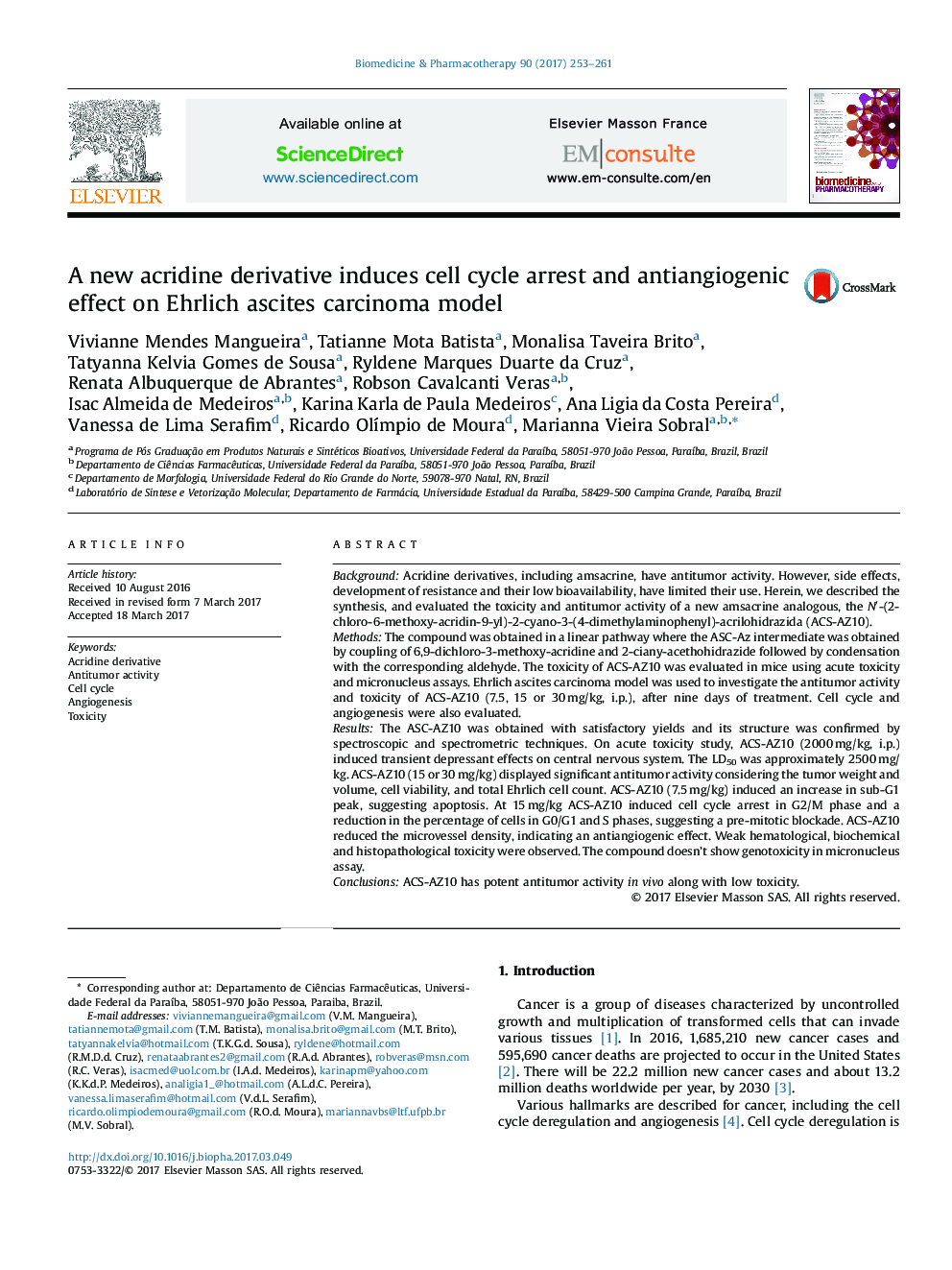| کد مقاله | کد نشریه | سال انتشار | مقاله انگلیسی | نسخه تمام متن |
|---|---|---|---|---|
| 5553040 | 1557952 | 2017 | 9 صفحه PDF | دانلود رایگان |
BackgroundAcridine derivatives, including amsacrine, have antitumor activity. However, side effects, development of resistance and their low bioavailability, have limited their use. Herein, we described the synthesis, and evaluated the toxicity and antitumor activity of a new amsacrine analogous, the Nâ²-(2-chloro-6-methoxy-acridin-9-yl)-2-cyano-3-(4-dimethylaminophenyl)-acrilohidrazida (ACS-AZ10).MethodsThe compound was obtained in a linear pathway where the ASC-Az intermediate was obtained by coupling of 6,9-dichloro-3-methoxy-acridine and 2-ciany-acethohidrazide followed by condensation with the corresponding aldehyde. The toxicity of ACS-AZ10 was evaluated in mice using acute toxicity and micronucleus assays. Ehrlich ascites carcinoma model was used to investigate the antitumor activity and toxicity of ACS-AZ10 (7.5, 15 or 30Â mg/kg, i.p.), after nine days of treatment. Cell cycle and angiogenesis were also evaluated.ResultsThe ASC-AZ10 was obtained with satisfactory yields and its structure was confirmed by spectroscopic and spectrometric techniques. On acute toxicity study, ACS-AZ10 (2000Â mg/kg, i.p.) induced transient depressant effects on central nervous system. The LD50 was approximately 2500Â mg/kg. ACS-AZ10 (15 or 30Â mg/kg) displayed significant antitumor activity considering the tumor weight and volume, cell viability, and total Ehrlich cell count. ACS-AZ10 (7.5Â mg/kg) induced an increase in sub-G1 peak, suggesting apoptosis. At 15Â mg/kg ACS-AZ10 induced cell cycle arrest in G2/M phase and a reduction in the percentage of cells in G0/G1 and S phases, suggesting a pre-mitotic blockade. ACS-AZ10 reduced the microvessel density, indicating an antiangiogenic effect. Weak hematological, biochemical and histopathological toxicity were observed. The compound doesn't show genotoxicity in micronucleus assay.ConclusionsACS-AZ10 has potent antitumor activity in vivo along with low toxicity.
68
Journal: Biomedicine & Pharmacotherapy - Volume 90, June 2017, Pages 253-261
